Papess John. The Vatican's biggest secret
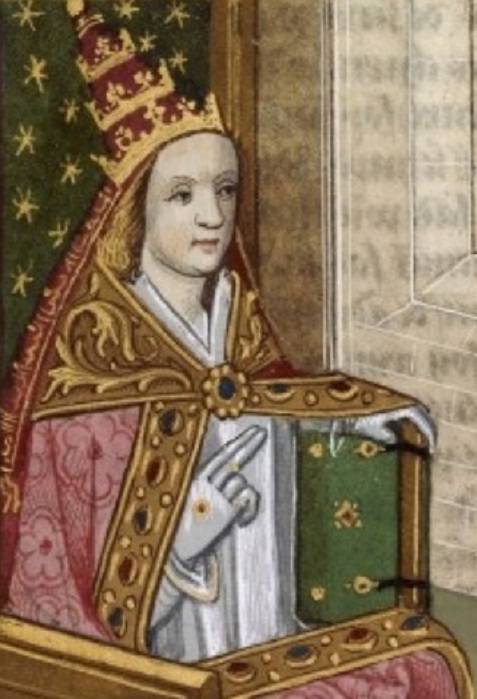
The Catholic Church, of course, resolutely rejects the fact of the existence of the “papess,” and the question of historical the veracity of all these legends is still not permitted.
Traces of Popess John
Indirect evidence of the possibility of a woman staying on the papal throne unexpectedly appeared in the year 1276, when, after the death of Pope Adrian V, his successor took the name John XXI. Meanwhile, if you follow the official chronology of the Vatican, its “serial number” was supposed to be “XX”, and this fact, beyond doubt, certainly seems very interesting. Attempts to explain it by the mistake of scribes (absolutely everyone?) Look, to put it mildly, not very convincing.
Another proof of some scandal related to the sex of the popes is the strange tradition of putting the newly elected pontiff in a special marble chair with a hole in the seat (sedia stercoraria) in order to examine him for being a male. Having received confirmation that the new pontiff had the corresponding genitals, the conclave applauded. This applause, accompanied by shouts of “uovo” (“ovo”), was called ... “ovation”! If not laziness, look how the word "uovo" is translated from Italian into Russian. This custom was abolished by Pope Leo X - in the 16th century.
The procedure for checking newly elected Roman popes for being male is mentioned in many medieval literary sources, the most famous of which is the novel Gargantua and Pantagruel, written by Francois Rabelais in the 16th century.
The arrangement of the famous armchair was described in detail by the Greek historian Laonikius Chalkonopoulos in 1464. It stood for a long time in the portico of the Cathedral of San Giovanni in Laterano, now it can be seen in the Vatican Museum. However, right now you do not need to go far, here is a photo of this chair, look:
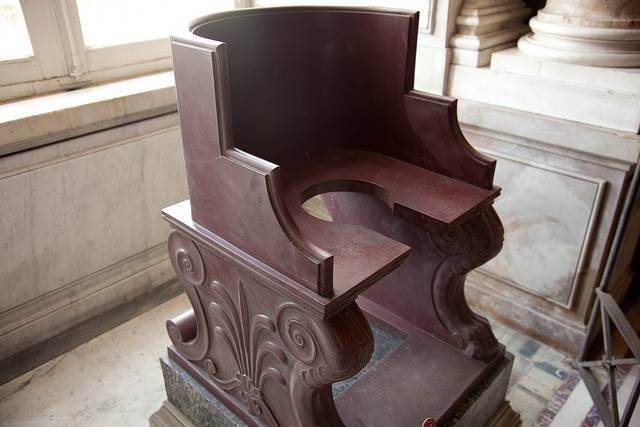
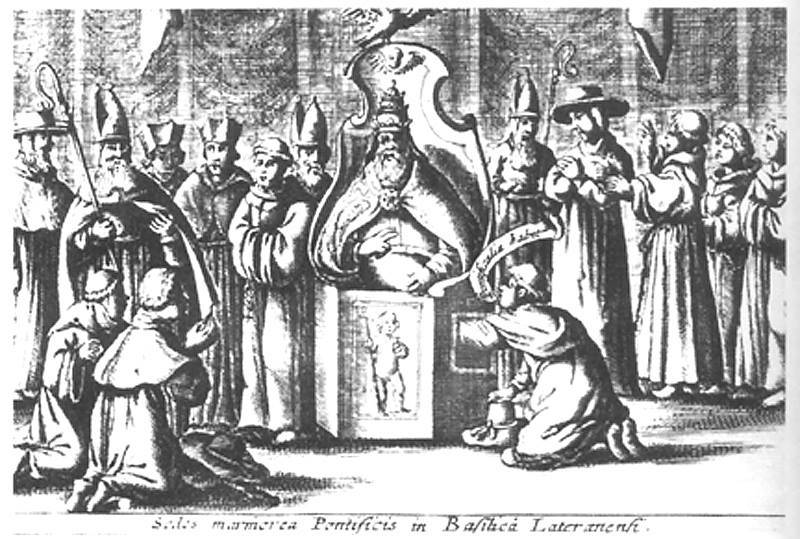
In general, there is still some kind of “smoke” (without which “there is no fire”). Let's try to understand the available documents.
Papess John in historical documents
For the first time, the name of interest to us sounded, according to some sources, back in the 9th century - in his manuscript he was mentioned by the curator of the Vatican Library Anastasius. The next time it appears in documents in the 13th century, when the Dominican monk Stephen de Bourbon (Etienne Bourbon) in his work “De septem donis Spiritus Sancti” (“Seven Gifts of the Holy Spirit”), said that one of the Roman popes was a woman, died during childbirth. He did not name her.
His brother in the Order, Jean de Mayi, in the same XIII century writes in more detail about a woman who, under the guise of a man, first took up the position of the first notary of the Vatican, then became a cardinal, and then the Pope. During one of the public ceremonies, she began contractions, ending with the birth of a boy. The Romans allegedly tied it to the tail of a horse, and dragged it around the city, and then executed it. At the place of her death, a plate was installed with the inscription: “Petre, Pater Patrum, Papissae Prodito Partum” (“O Peter, Father of the Fathers, Expose the Birth of the Son by the Papess”).
Another 13th-century author, Martin Polonius (also known as Martin of Bohemia or Opava, Martin of Tropau) in the Chronicle of the Popes and Emperors (Cronicon pontificum et imperatorum), reports that after Pope Leo IV, the Englishman John was elected new pontiff (Johannes Anglicus natione), who arrived in Rome from Mainz. Martin claims that this “Englishman” was actually a woman named Jeanne, who was born in a family of English immigrants in 822. After her parents died, she, for some time, dressed as a man, lived in the Benedictine monastery of St. Blitruda, where she was in charge of the library . From there, Jeanne, accompanied by one of the monks, went to Athens, where at first she studied at the theological school, and then she taught in it, famous for her education and scholarship.
She was invited to Rome as a teacher of theology and law, for some time she, under the name of Giovanni Anglico, lived in the monastery of St. Martin. Pope Leo IV turned his attention to a capable “learned monk”, in which she began to act as secretary, and then as a notary at the papal council. According to some reports, at that time Jeanne supervised the construction of stone walls that still surround the Vatican. Her talents and authority were so high that she was elected pope, but, during her pontificate, became pregnant and gave birth to a child on the road from St. Peter's Basilica to the Lateran Basilica. Since then, according to Martin, religious processions with the participation of popes never go down this street. This author reports that John died during childbirth and was buried at the place of her death.
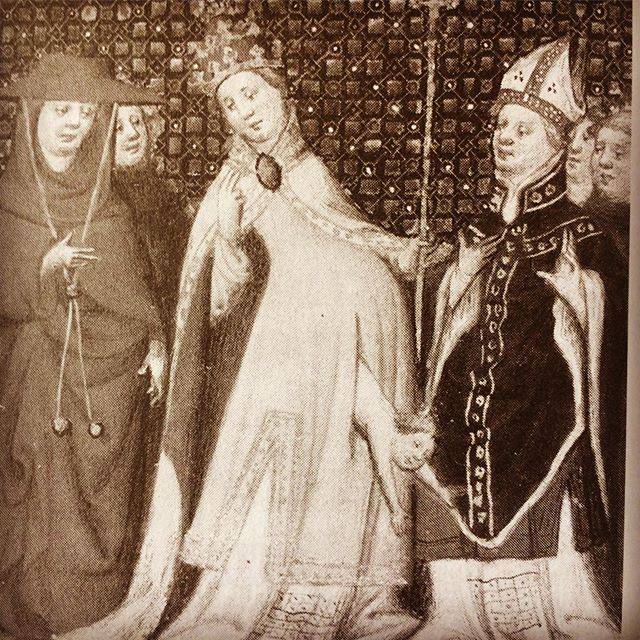
There is another version of the Martin Bohemian chronicle, which states that John did not die, but was removed from her post and sent to one of the monasteries, where she spent the rest of her life in repentance. And her son grew up and became bishop of Ostia.
Popess John is also mentioned in ancient Russian sources. So, in the Nestorian annals under 991 it is said that, having learned that Prince Vladimir was addressing the Pope, the Patriarch of Constantinople writes to him:
Some researchers quite logically suggested that in this case we are dealing with "black PR": the Orthodox patriarch could slander his Roman rivals. After all, there is a hypothesis according to which all this legend about papess John is of Byzantine origin. But it may well be that the patriarch informs the prince, although compromising Rome, but completely reliable information. It is known that, for some reason, none of the representatives of the official church authorities objected to Jan Hus when he in 1413 at the Cathedral in Constance, refuting the claim that the Cardinals conclave is an infallible instance, said to the accusers:
Of this, of course, it is impossible to draw an unambiguous conclusion about the real existence of Popess John. But we can safely assume that the judges of Gus read the above sources, knew from them about the popess and did not doubt its existence. The absence of objections, in general, is not surprising, because from the 13th to the 15th centuries the fact of the existence of the “popess” by John Rome was not advertised, but was not denied, with preference being given to the version of Martin Polonius. Mention of John is on the official list of popes of that time - Liber Pontificalis, the only copy of which is stored in the Vatican library.
It is known that in the cathedral of the city of Siena among the many busts of the popes between Leo IV and Benedict III for a long time there was a female bust with the inscription "Giovanni VIII, a woman from England." At the beginning of the XVII century, Pope Clement VIII ordered to replace him with a bust of Pope Zachariah.
Only in the 15th century did the historians of the Church of Enea Silvio Piccolomini and Bartolomeo Platina declare the history of Popess Joanna a legend. Their opinion over time and became the official point of view of the Vatican.
In the era of the Reformation, some Protestant writers turned to the traditions of Pope John, for whom this story became an occasion to demonstrate to the whole world the "primordial immorality of the Roman high priests" and the depravity of the orders that prevailed at the papal court.
In 1557, Vergerio's book was published with the eloquent title, "The Story of Pope John, Who turned out to be a depraved woman and a witch."
In 1582, English merchants presented Ivan the Terrible with a pamphlet about Pope Antichrist, which also contained the story of John Bale, "The Life of Pope Pope John." The tsar ordered the translation of this work into Russian, and he did not go unnoticed: for example, Protopope Habakkuk mentions Pope John.
In 1691, the book “The Unusual History of the Pope Who Ruled Between Leo IV and Benedict III” was written by F. Spanheim.
Martin Luther said that during a pilgrimage to Rome he saw a statue of Popess John.
Look at these two Roman statues - some believe that they depict John in the headdress of the popes:
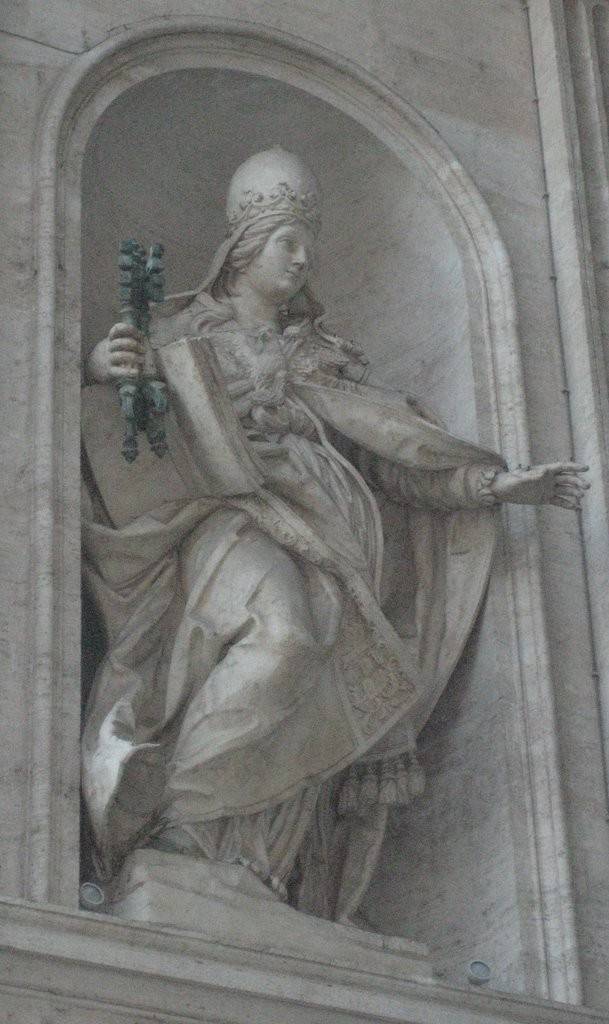
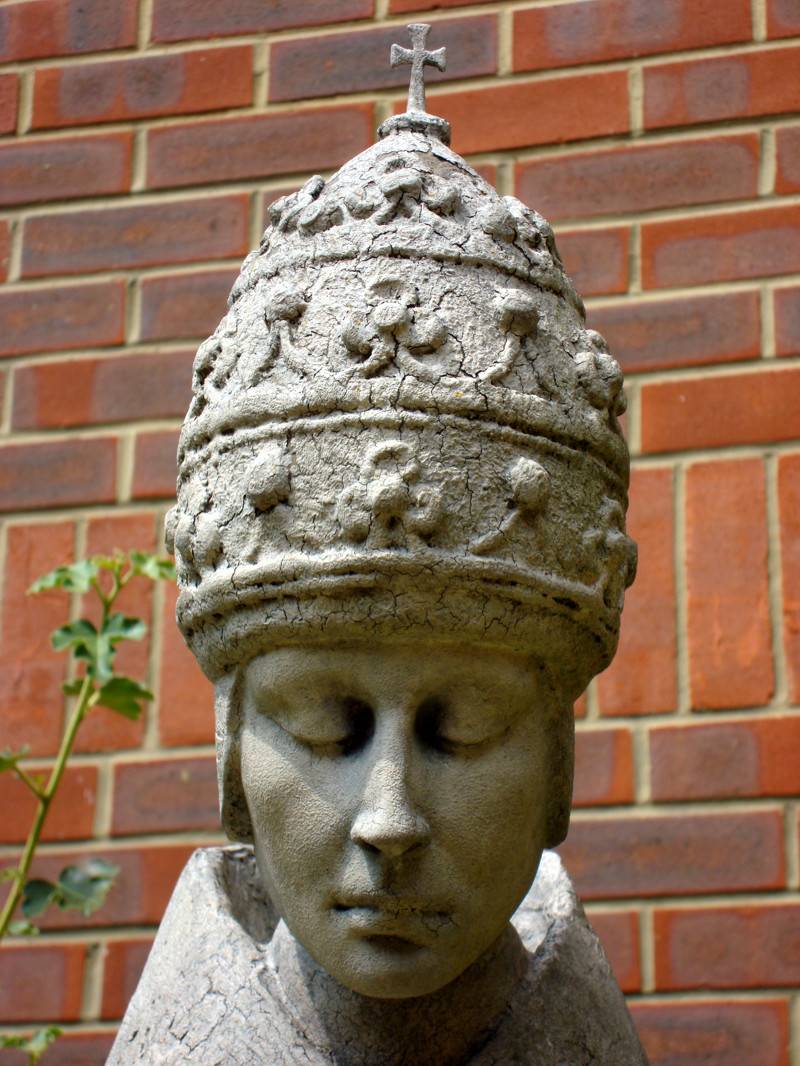
Later authors found in the chronicles of those years reports of all kinds of signs that preceded the election of the “wrong” pope. In Italy, it turns out, earthquakes, in order to prevent unreasonable inhabitants, destroyed some cities and villages. In France, the role of the sign from above was played by the locusts, which at first destroyed the crops, and then were driven by the south wind into the sea, but were again thrown ashore, where they rotted, spreading the stench that caused the epidemic. In Spain, the body of St. Vincenzo, stolen by a certain monk (an enterprising nun wanted to sell it in pieces as relics), came to the church porch at night, where it began to "loudly beg for a burial in the same place." However, such stories, if desired, can easily be found in the archives - in any quantity. Which, in general, has been done repeatedly. The fact that the innocent Dutch had to “pay” for the rise of the new dynasty in Milan or Florence, and the Lord God punished the Portuguese or Greeks for the fact that some German electors supported Martin Luther, did not bother anyone. The Hussite movement in the Czech Republic, according to the chronicles of those years, was completely accompanied by cheerful night dances of the dead in cemeteries throughout Central Europe. Incidentally, this is mentioned at the beginning of A. Sapkovsky’s novel “Tower of the Fools”:
The same Etienne of Bourbon acknowledges that "the reign of John VIII was not the worst reign of the others," and only the "disgusting female essence" failed him.
The official point of view of the Vatican
But what does the Vatican say about this?
According to official chronology, the successor of Leo IV was Pope Benedict III (855-858), who takes the place of the hypothetical John. Numismatists even know the coin of Benedict III, dated 855 year. Intravital portraits of this pope were not preserved, the earliest of those that have survived to our time, we can see on the engraving of the XVII century:
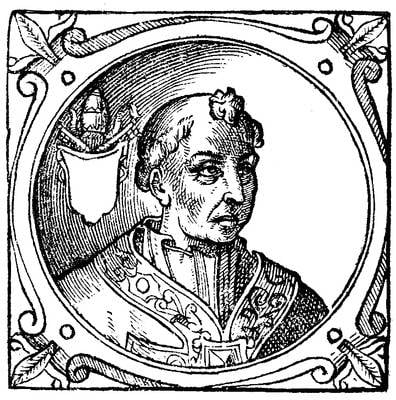
Some researchers believe that the years of the reign of Benedict III were “corrected” by the Vatican: they suggest the possibility of consciously dating 855 with the year of the coin issued in 857 or 858, supposedly in this way they could try to erase the memory of the scandal.
As for John VIII, in the list of popes currently accepted, this name belongs to the pontiff who ruled in 872-882.
Skeptics' point of view
I must say that many researchers in this case are on the side of the Vatican, skeptical of information about the existence of Popess John. Their arguments are also quite convincing. They consider this story to be a legend that arose in Rome in the second half of the tenth century as a pamphlet that ridiculed the dominance of women in the court of the popes - from John X to John XII (919 – 963). There is a version that Countess Marotius, who was the lover of Pope Sergius III, could have blinded and then strangled the captive Pope John X, and her son ascended the papal throne under the name of John XI.
It is also known that the Byzantine Patriarch Photius, a contemporary of those events, the enemy of Rome, who accused the popes of heresy, knew Benedict III very well, but he never mentioned John or John. The German historian and theologian Ignaz von Döllinger in the book “Legends of the Middle Ages Associated with Popes” (published in Germany in 1863, in Italy in 1866) believed that the founding of the statue of a woman in the papal was the basis of the legend of “papess” tiara and with a baby in her arms ”and the inscription“ Pap.Pater Patrum ”. In Rome, this statue was kept in a chapel located near the Santissimi Quatro temple, but Sixtus V (was the pope in 1585 - 1590) ordered to remove it from there. Where she is now is unknown.
Many believe that this statue of the “papess” was, in fact, pagan and not even female: “Pater patrum” (“Father of the Fathers”) is one of the titles of the god Mithras. Later, during excavations, archaeologists, at the place where this statue was found, found the foundation of a pagan temple.
The narrow road that goes from St. Peter's Basilica to the Lateran Basilica, on which, allegedly, gave birth to John, was really called once Vicus Papissae. However, it is believed that, in fact, its name came from the house of a family of local rich people named Pape.
Another popess
It is curious that at the end of the 13th century there was another, much less well-known “popess” - the Countess of Milan Manfred Visconti. The fact is that a certain Guglielma of Bohemia, the founder of the sect of the Guglielmites, predicted then that at the end of the era women would ascend the throne of Peter. After the death of Guglielma (1281), her followers decided that the time had come and chose the “popess” - the very Countess of Visconti. In 1300, the unfortunate countess was burned at the stake like a heretic. It is simply amazing that the names of these women do not know and do not use the current feminists.
Interestingly, the famous Lucrezia Borgia, the youngest daughter of the no less famous pope Alexander VI, also for some time "acted" as the head of the Vatican - replacing the father who was absent in Rome (by his appointment). But at that time she possessed only secular, but not spiritual power. And therefore, it’s impossible to call her papacy.
II main lasso of the Tarot deck
In the tarot fortune-telling deck there is a card (the senior lasso II - one of the 22 major lasso), which is usually called the "Papess". It depicts a woman in a monastic robe, in a crown, with a cross and a book in her hands. According to one version of the interpretation, this card means consolation, according to another - high abilities combined with self-doubt.
Some try to present the image on the map as an allegory of the true Christian Church, but the map (like the others) received this name in 1500. At that time, gambling and all kinds of fortune-telling by the official Church, to put it mildly, were not welcomed, and therefore it was dangerous to correlate the images on the "devil's invention" with Christian symbols because of the high risk of accusations of blasphemy. The drawing on this map and its name then served as a clear allusion to the legend of Pope John.
However, in other Tarot systems on the woman’s head, not the papal tiara, but the headdress of the ancient Egyptian goddess Luna Hathor, and this card is called the “High Priestess” (sometimes “Virgin”), and is associated either with Isis or Artemis.
And in the Llewellyn system, this is the Celtic goddess Keridwen (White Lady, the goddess of the Moon and death, whose children called themselves the bards of Wales):

Papess John in modern culture
In the XIX century in Russia, Popess John almost became the heroine of A.S. Pushkin, who planned to devote a play to her in the 3 acts, however, he wanted to transfer the effect of this tragedy from the IX century to the XV or XVI century. In addition, in the first edition of "Tales of the Fisherman and the Fish" there was a scene where the old woman wished to take the throne of St. Peter in Rome:
And I want to be a pope ... ”
The interest in the personality of the mysterious popess John is now quite large. At one of the fashion shows of women’s clothing in Rome, a tall white hat was once shown that looked like a papal tiara. In the catalog, this headdress was held under the name "popessa".
Two feature films were shot about the tragic fate of John. The first one, published in 1972 in Great Britain, is called “Pope Pope John”. In this film, the heroine has a wonderful father - a wandering priest, a preacher who teaches her to read and generally gives a good education.
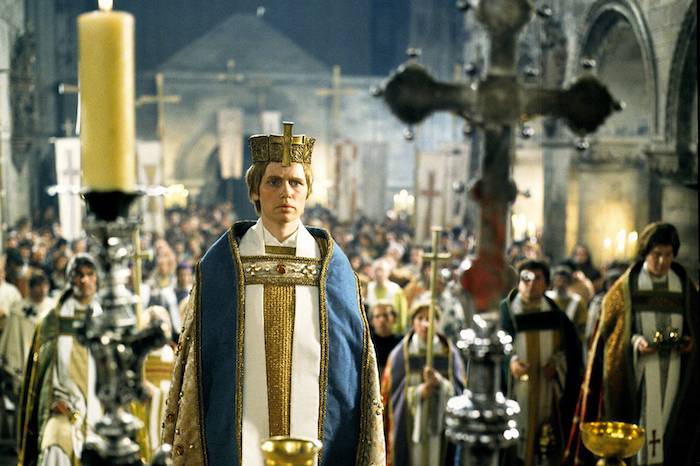
In the second, shot jointly by the efforts of Italy, Spain, Great Britain and Germany in 2009 (“John is a woman on the papal throne”, the script was based on the novel by Donna Woolfolk Cross), the father, on the contrary, in every possible way impedes the formation of his daughter. She has to learn from some vagabond philosopher who manages to get a girl in a monastery school.
What conclusion can be drawn from the foregoing? Evidence of the existence of Popess John, as before, can only be recognized as indirect. The mystery of John will be solved only after the discovery of the archives of the Vatican for researchers. Only a study of the documents stored there will allow us to draw a final conclusion about the reality of this mysterious woman. In the meantime, the identity of the mysterious popess continues to be the subject of debate and debate.
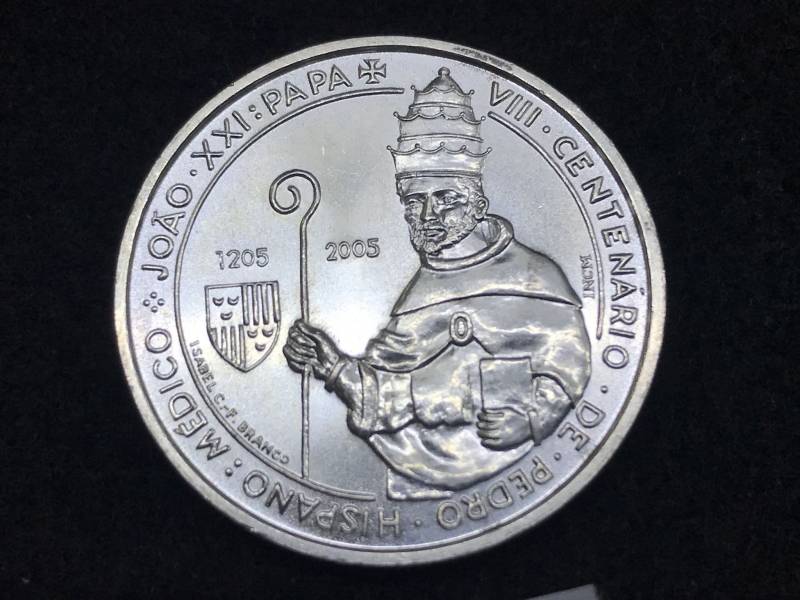
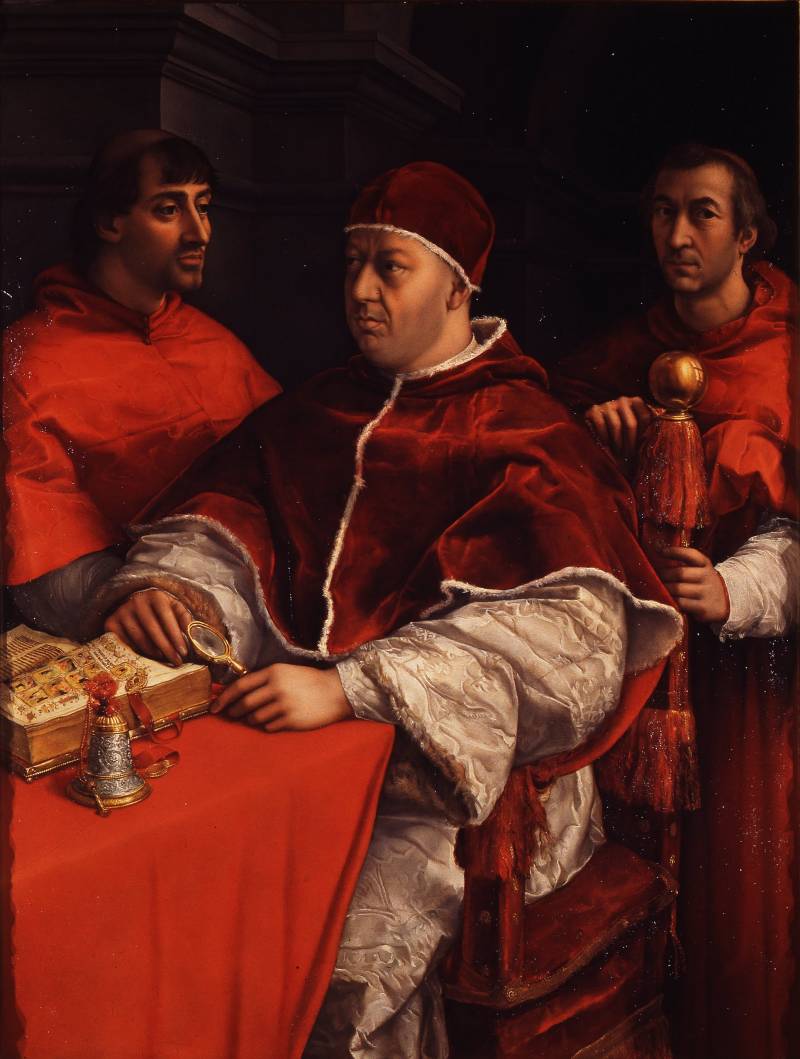
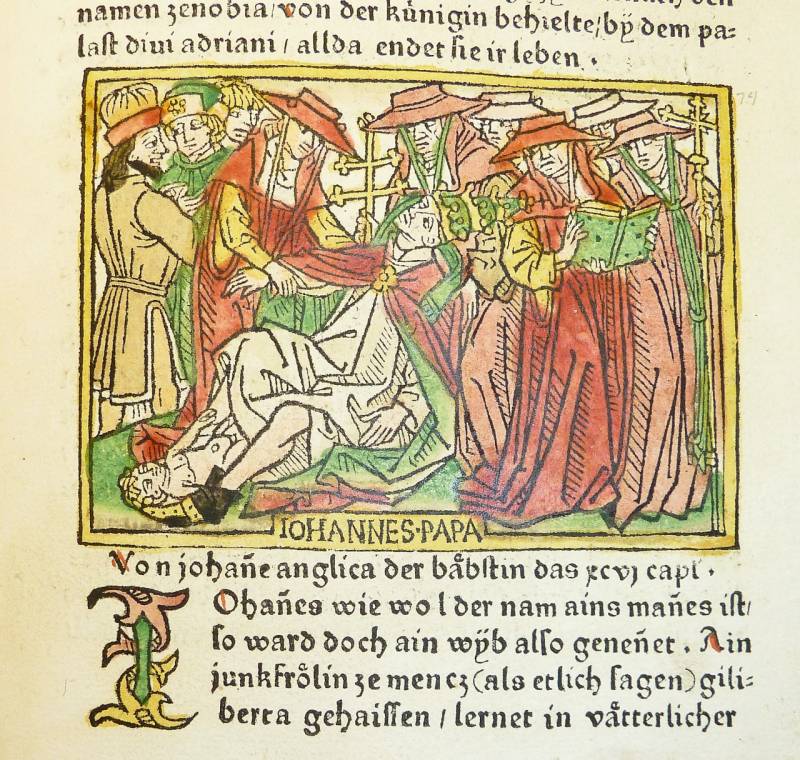
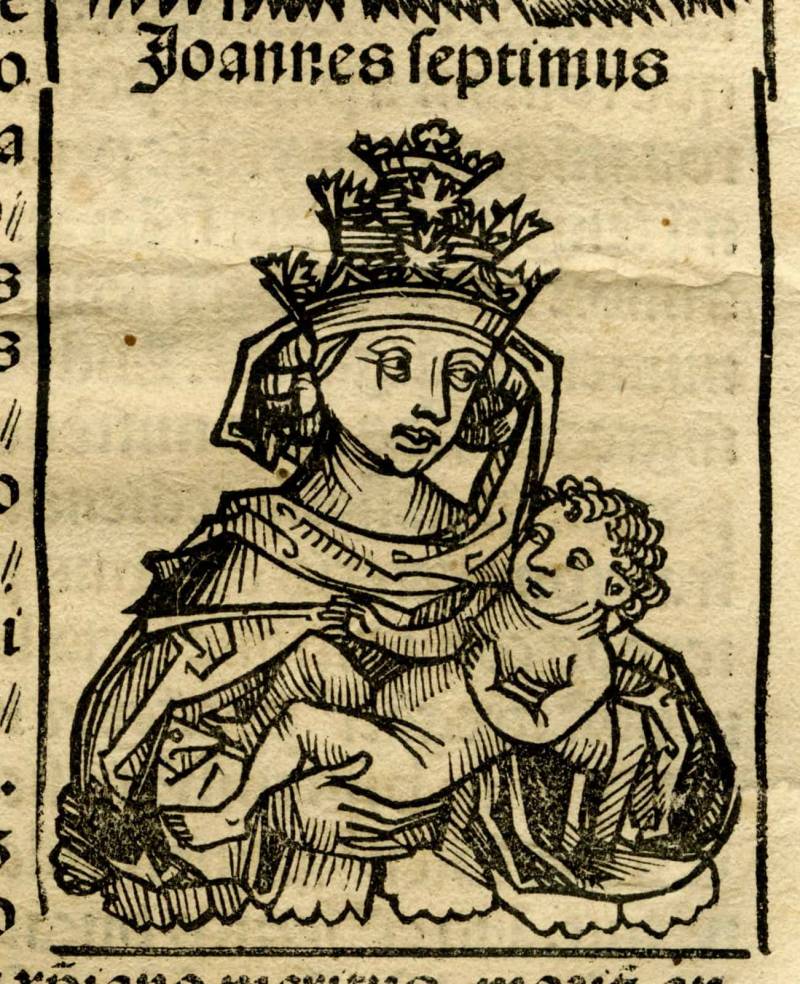
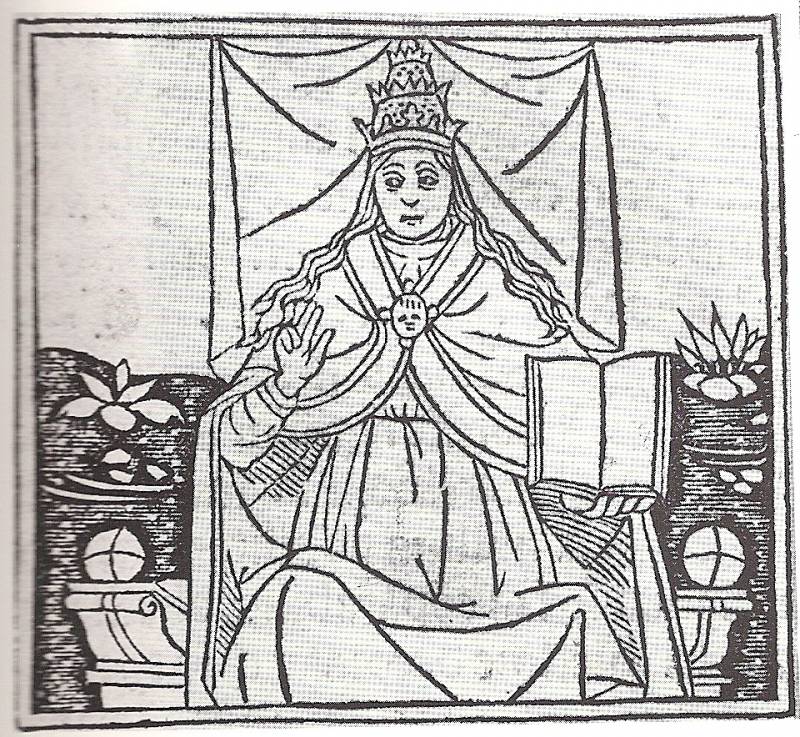
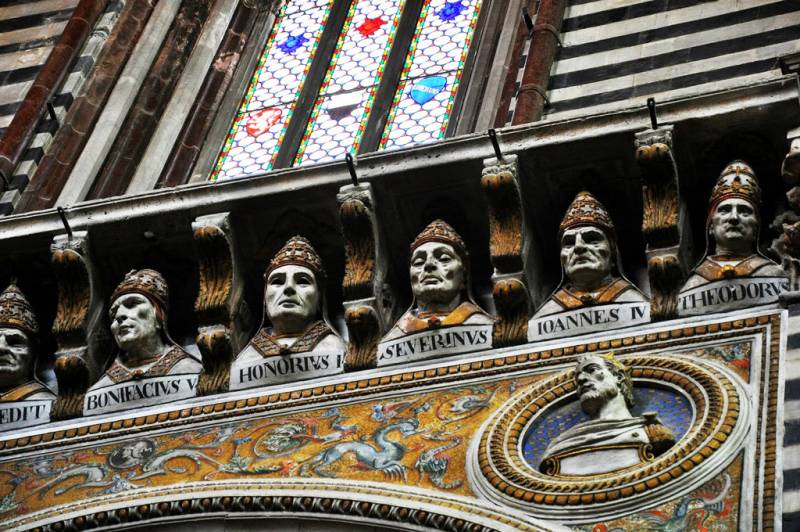
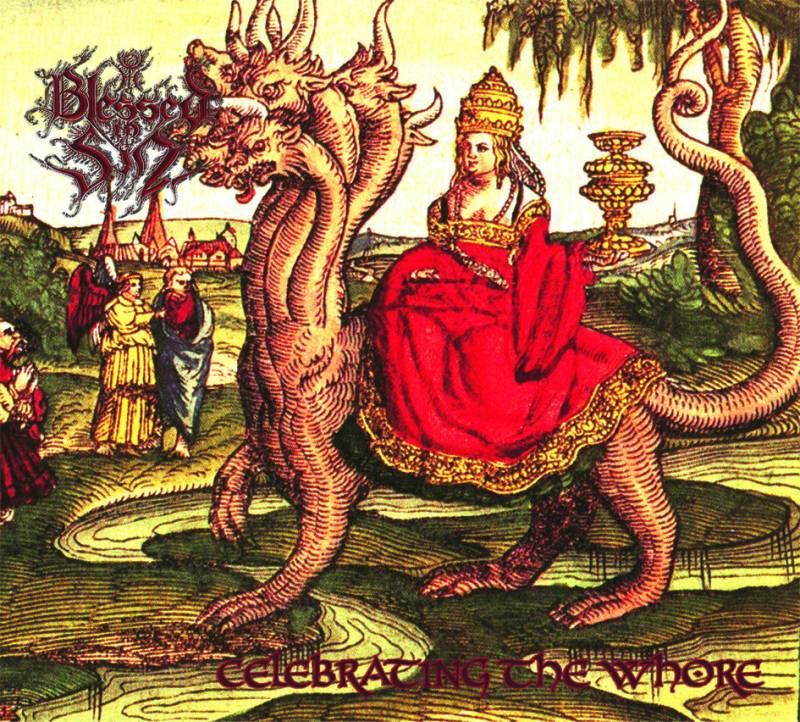
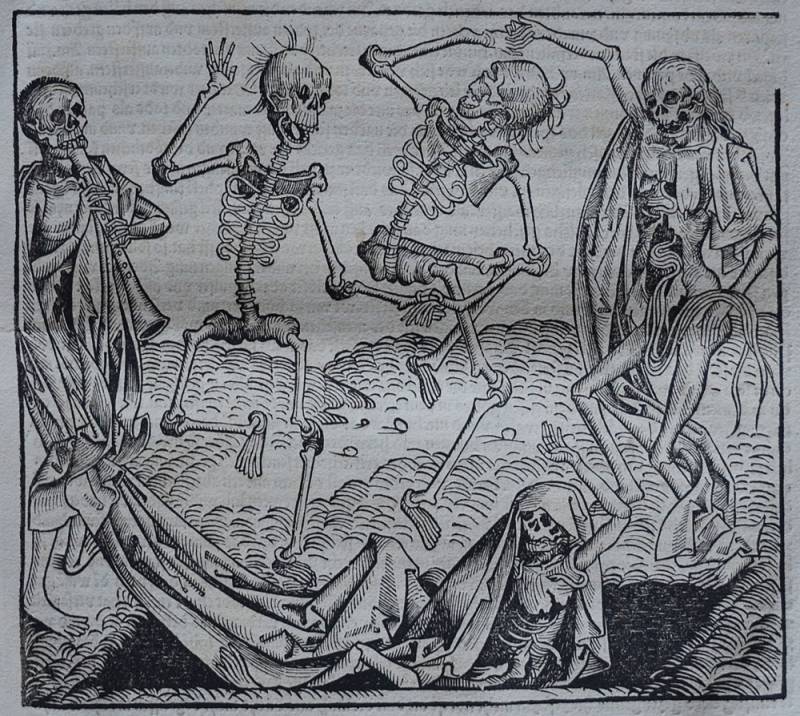
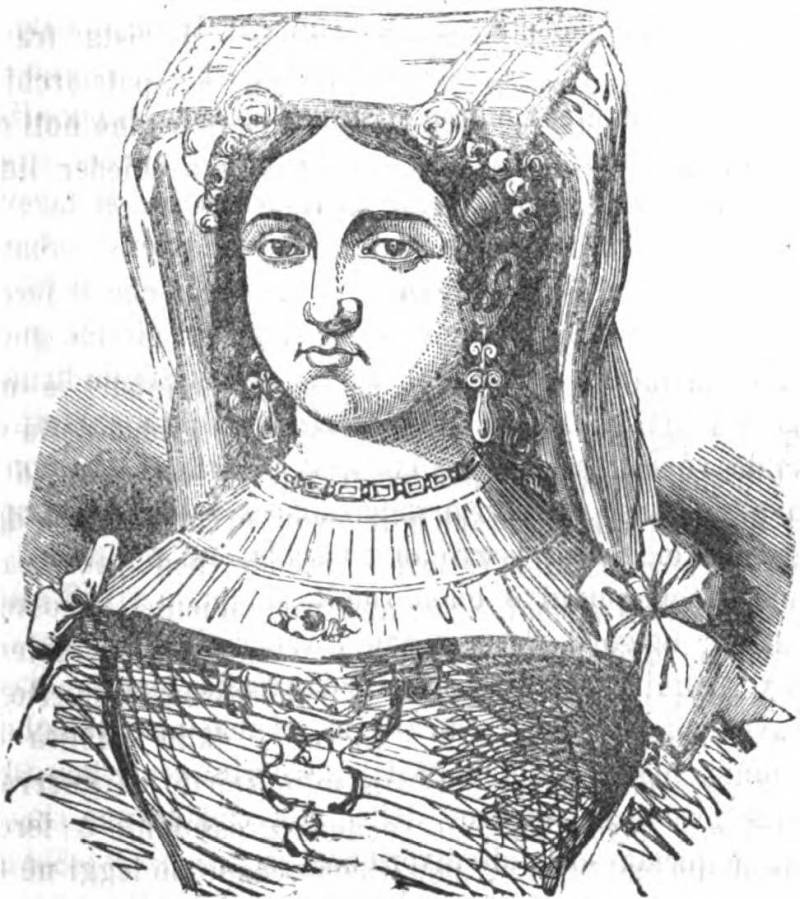
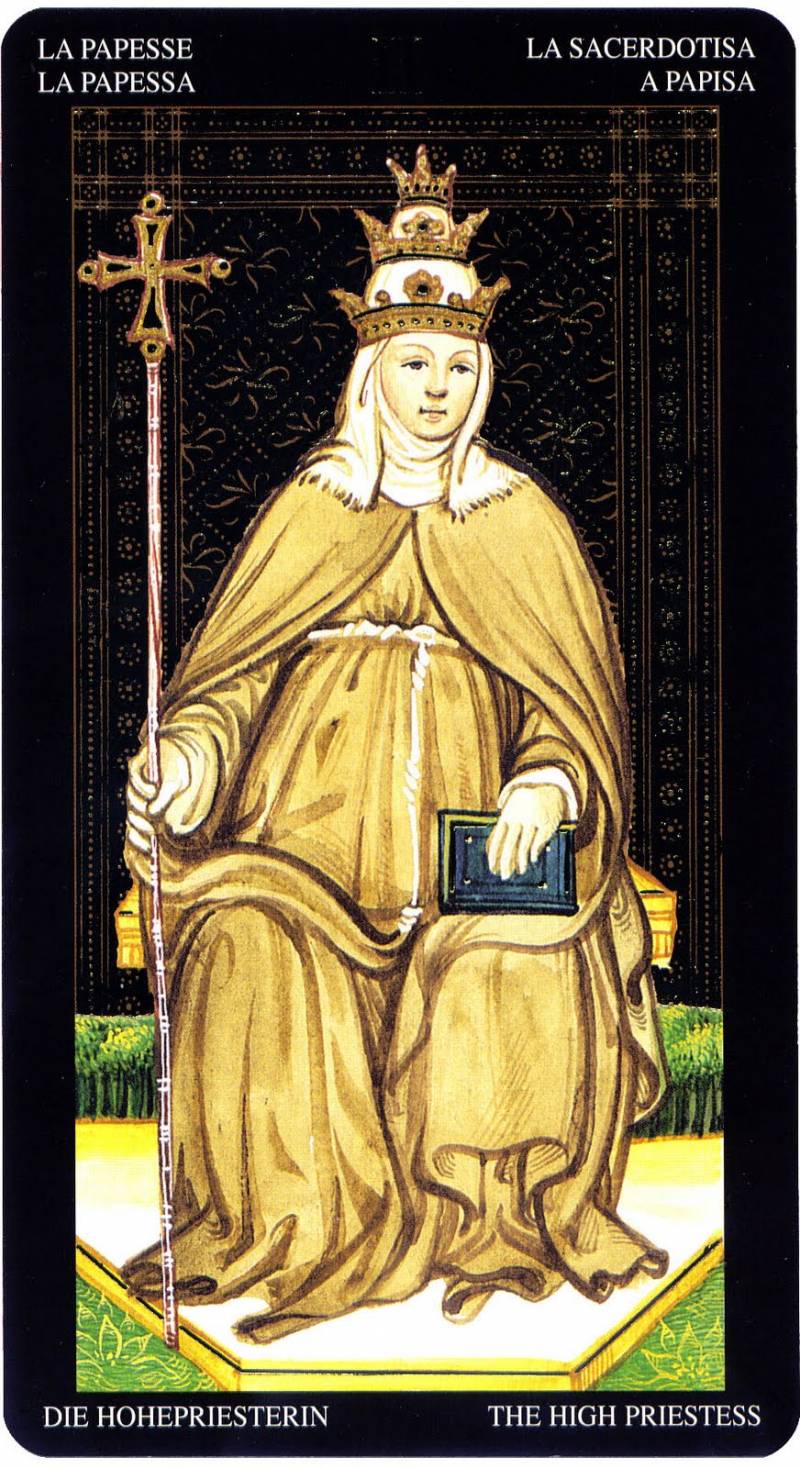
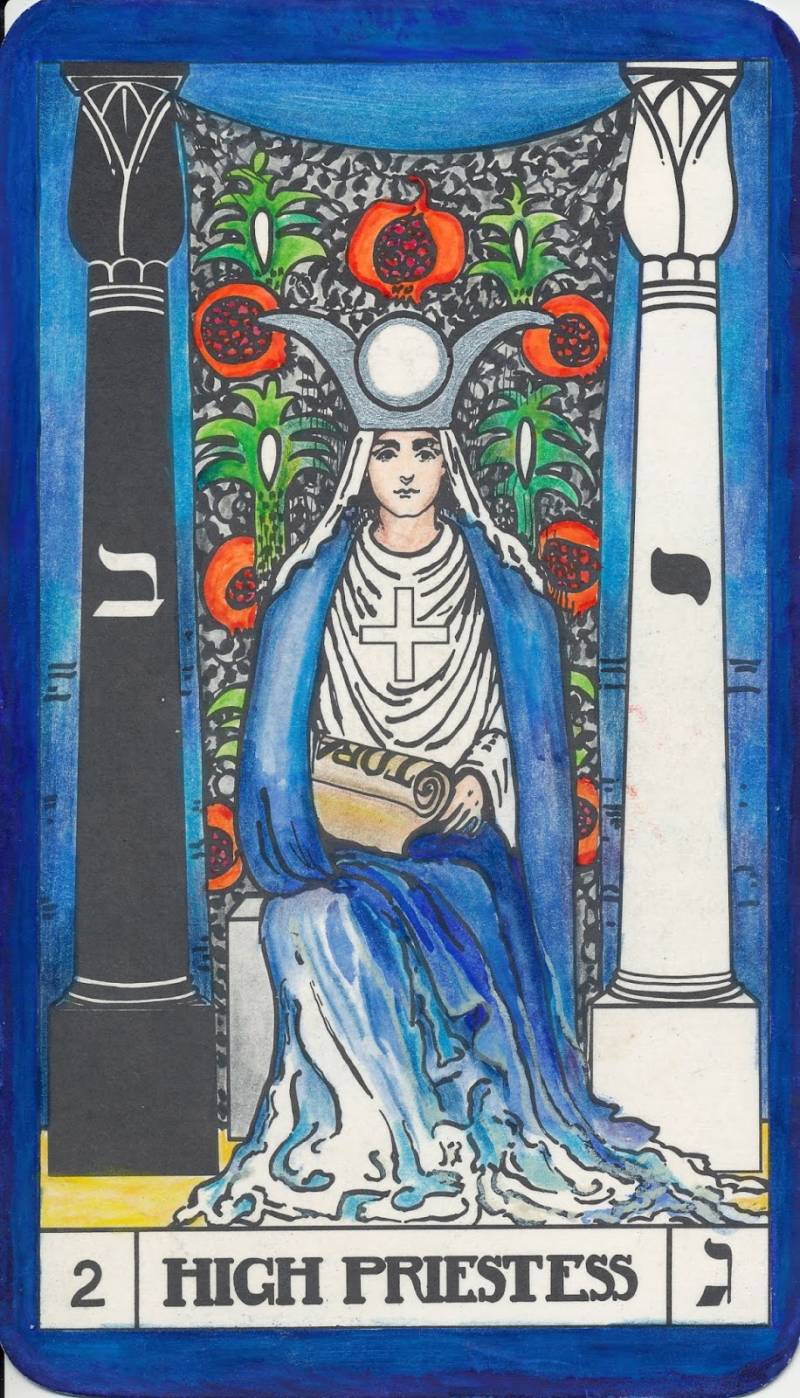
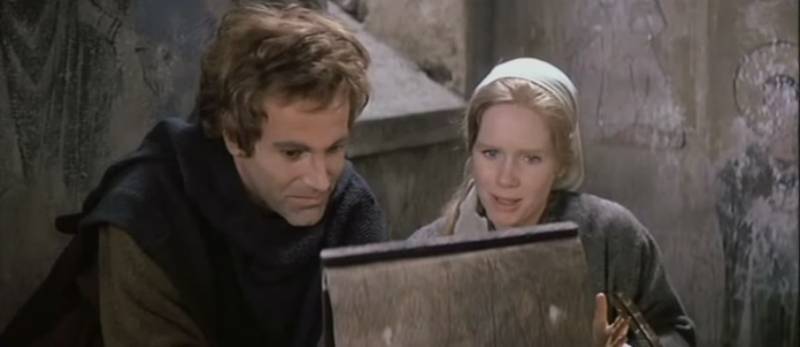

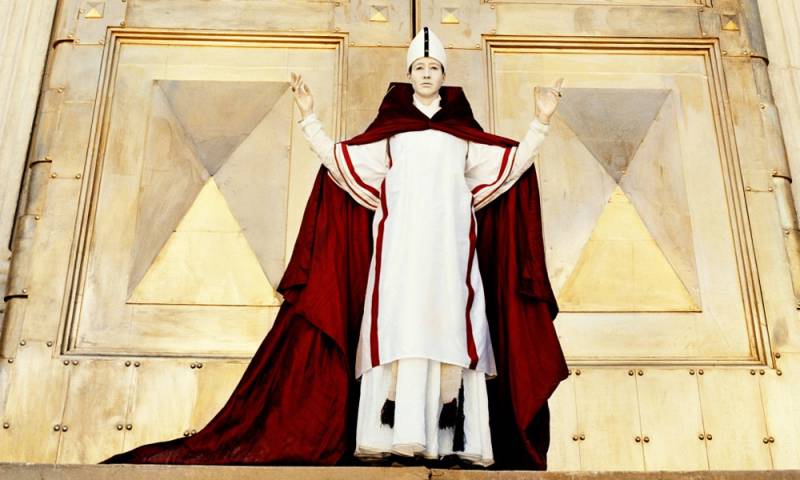
Information